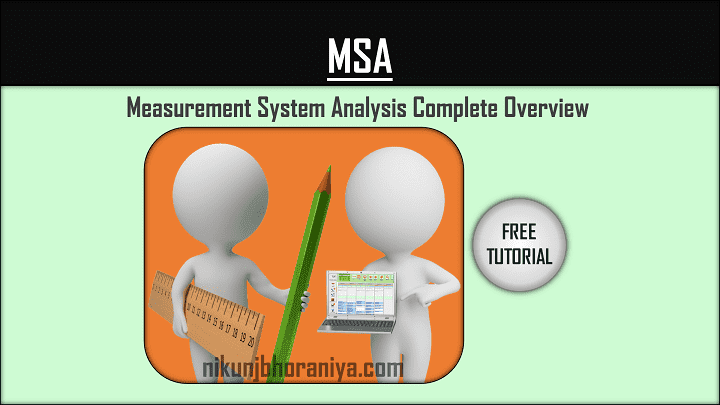Measurement System Analysis - Resolution

In Measurement System Analysis (MSA), resolution refers to the smallest change in the quantity being measured that can be detected by the measurement system. It is an important aspect of assessing the quality and reliability of a measurement system. Resolution is particularly relevant when dealing with digital measurement systems or instruments.
Here are some key points about resolution in the context of MSA:
-
Digital Instruments:
- In digital measurement systems, resolution is often expressed in terms of the smallest increment or step that the instrument can detect or display.
- For example, if you are using a digital caliper with a resolution of 0.01 mm, it means that the instrument can detect changes in measurement down to 0.01 mm.
-
Analog Instruments:
- In analog measurement systems, resolution is related to the smallest division on the scale or the smallest change that can be reliably observed.
- For example, if you are using an analog micrometer with a resolution of 0.001 inches, it means that the smallest change that can be reliably read is 0.001 inches.
-
Impact on Measurement Precision:
- Higher resolution generally allows for more precise measurements because smaller changes in the measured quantity can be distinguished.
- However, it's essential to ensure that the resolution is appropriate for the precision requirements of the measurement task. Using excessively high-resolution instruments for a task with lower precision requirements may lead to unnecessary costs and complexity.
-
Consideration in MSA:
- During a Measurement System Analysis, it's important to assess the resolution of the measuring instrument to determine if it is suitable for the intended purpose.
- One should consider whether the resolution is adequate for the variation present in the measured process. If the resolution is too coarse, the measurement system may not be able to detect important variations, leading to inaccurate results.
-
Relation to Accuracy:
- While resolution is important, it's not the sole factor in determining the overall accuracy of a measurement system. Accuracy involves both precision (related to resolution) and bias (the difference between the measured value and the true value).
In summary, resolution in MSA refers to the smallest change that a measurement system can detect. It's a critical factor in assessing the precision of the measurement process, especially in the context of digital instruments. During MSA, it's essential to consider whether the resolution of the measurement system is appropriate for the precision requirements of the application.
Thank you.
